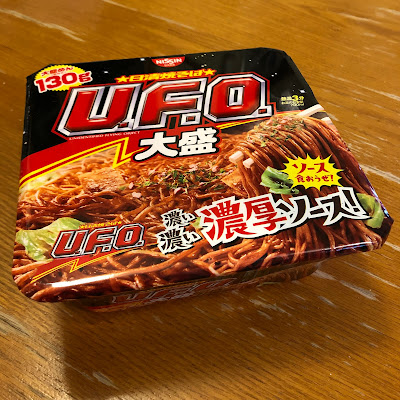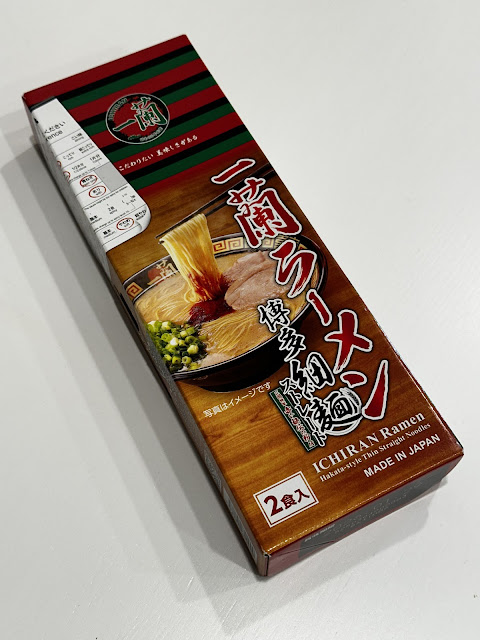When I last visited the Kamakura area I wanted to visit Enoshima, but all the shrines and temples used up the day I had allocated. You can't do both in a day unless you skim the surface. There is a great deal of history here from the Kamakura Shogunate.
May 13, 2025 TUESDAY Enoshima
Getting to Enoshima is easy from Tokyo Station or Shinjuku Station. Our hotel was next to Kyobashi Station on the Ginza Line so we took it to Shimbashi where we transferred to the Tokdaido Line and road it down to Ofuna Station (total time 50 mins). Here, I wanted to see the Shonan Monorail, a hanging train, which is a little different from your other ground-based rail trains. It was a short 14 minute ride to Fujisawa and then a short walk through a touristy street to Enoshima Island. There is an aquarium here too along with the very distinct temple-like Enoshima Station.
 |
| Morning view of Mount Fuji from Enoshima. |
Enoshima Island is small, yet culturally rich with a cool blend of myth, history, and scenic beauty. According to legend, the island was raised from the sea by the goddess Benzaiten, who subdued a five-headed dragon that once terrorized the region. Today, Enoshima Shrine—actually a trio of shrines: Hetsunomiya, Nakatsunomiya, and Okutsunomiya—honors Benzaiten and is scattered across the island’s lush, hilly terrain. Visitors approach the island via the Bentenbashi Bridge and are greeted by a bronze torii gate that marks the entrance to the bustling Benten Nakamise Street, a lively thoroughfare lined with souvenir shops, seafood stalls, and traditional sweets.
As one ascends the island, more torii gates and stone stairways lead to panoramic viewpoints, including the Sea Candle observatory, which offers sweeping vistas of Sagami Bay and, on clear days, Mount Fuji. Enoshima’s layered history, from its spiritual roots to its Meiji-era botanical gardens, is woven into every path and shrine. If you don't want to walk up all the stairs, you can pay to take an enclosed escalator (cleverly hidden to not wreck the scenery) to take you up to the various shrines at different levels of the island. There's places to eat and drink at scatter through the island and on the back side of it. It is very touristy place for the locals, yet full of history and great views. There are places to walk around much of the island, visit the Iwaya Caves, and even out onto rocks at low tide. I had a great time here.
 |
| View down from the hanging monorail. |
The hanging monorail was a different kind of ride and in some ways it was like a very slow-motion roller coaster as it does go over many hills and a tunnel. You do get views of the surrounding area and it was a neat experience.
 |
| The long causeway out to Enoshima Island. There are beaches here and lots of mud at low tide. You can see the Sea Candle Tower on top of the island. |
 |
| Mount Fuji made a guest appearance while we were there. Later the atmospherics changed to totally obscure the volcano. Humidity and cloud play a big role in being able to see Fuji. |
 |
The big bronze torii gate leading to Benten Nakamise Street behind it and the first gatehouse to the shrines. Lots of stairs or take the escalator (extra fee for this of course).
|
 |
| Benten Nakamise Street and First Gate House |
 |
| Colourful tenugui cloth. |
 |
| Lanterns at the spa. |
a
 |
| Hesumiya, main hall. |
Hetsumiya (辺津宮) is the first and most accessible of the three shrines that make up Enoshima Shrine, located on the small island of Enoshima in Fujisawa, Kanagawa Prefecture. It’s often referred to as the “gateway” to the sacred island. Founded in 1206 by Minamoto no Sanetomo, Hetsumiya enshrines Tagitsu-hime-no-mikoto, one of the three Munakata goddesses associated with water and seafaring. The current shrine building, rebuilt in 1976, showcases the elegant Gongen-zukuri architectural style and features the shrine’s crest, the Mukainami Mitsuuroko—three scales facing waves.
 |
| Smaller shrine building. |
 |
| Hoanden. |
Hoanden Hall, which houses two forms of Benzaiten, the goddess of music and fortune. Happi Benzaiten – Also known as the Eight-Armed Benzaiten, this statue dates back to the early Kamakura period. She’s depicted as a fierce protector, holding various weapons in her eight hands. This form emphasizes her power and martial strength, and it's considered a nationally designated Important Cultural Property. Myoon Benzaiten – This is the more serene and artistic form, often shown nude and playing a biwa (Japanese lute). She represents beauty, music, and eloquence. This statue is slightly younger and is designated as a cultural property by Fujisawa City. NO PHOTOS PERMITTED.
 |
| Fortunes from the shrine tied off to have the deities of the shrine handle bad fortune. |
 |
| Nakatsumiya |
Nakatsumiya (中津宮) is the middle shrine of the Enoshima Shrine complex and sits nestled partway up the island’s slope, surrounded by lush greenery and vibrant vermilion architecture. It was originally founded in 853 CE by the monk Jikaku Daishi, and it enshrines Ichikishima-hime-no-mikoto, one of the three Munakata goddesses, revered for beauty, charm, and eloquence. The current shrine buildings are modeled after reconstructions from 1689, commissioned by Tokugawa Tsunayoshi, and they showcase the elegant Gongen-zukuri style. One of the highlights is the coffered ceiling of the worship hall, adorned with 154 painted panels depicting seasonal flowers and birds—a visual feast that blends art and spirituality. Visitors often come here to pray for blessings related to beauty, artistic talent, and personal charm. There’s even a water fortunes here which are revealed when dipped in water.
 |
| Another view of the Nakatsumiya |
 |
| View of the beach on the shore from the an island viewpoint. |
 |
| Chinese-style pavillion in the Samuel Cocking Garden. |
 |
| Samuel Cocking Garden roses. |
 |
| Tunnel in the Samuel Cocking Garden with a cat statue. |
 |
| The Sea Candle. Wonderful views from the top all round. |
 |
| View from the top of the tower with the causeway and the mainland. |
 |
| Rugged cliffs and shoreline. |
 |
| Looking out to sea. |
 |
| More rugged cliff and dense brushy vegetation at the top. |
 |
| There are many scenic views as you walk the island. |
 |
| Okutsumiya with the painting of the great turtle on the ceiling. |
Okutsumiya (奥津宮) is the innermost shrine of the three shrines at the Enoshima Shrine complex, perched near the island’s rugged cliffs and just a short walk from the mystical Iwaya Caves. It’s at the top of the island and it enshrines Tagiri-hime-no-mikoto, the third of the Munakata goddesses, associated with the ocean’s depths and spiritual purification. The shrine’s origins trace back to 552 CE, when Emperor Kinmei ordered its construction near the caves where Benzaiten is said to have descended from the heavens. The current structure, rebuilt in the Edo period, features a ceiling carving known as the Ryū no Zu—a stunning piece of craftsmanship that seems to follow you with its eyes as you move.
 |
| Ryūgū-den |
Just beyond Okutsumiya lies the Ryūgū-den (Dragon Palace), a small shrine modeled after the mythical undersea palace from Japanese folklore. It adds a touch of fantasy to the already otherworldly setting.
The Legend of Benzaiten and Enoshima
Long ago, the coastal region of Koshigoe was plagued by natural disasters—storms, earthquakes, and the wrath of a fearsome five-headed dragon named Gozuryū. The villagers lived in fear, unable to appease the beast. Hearing the cries of the people, Benzaiten, the goddess of eloquence, music, and fortune, descended from the sky. As she did, a rocky spire surged from the sea to form Enoshima Island.
The dragon, awestruck by her beauty and power, fell in love and proposed to her. But Benzaiten, wise and compassionate, refused—unless he changed his ways. She demanded he protect the people instead of tormenting them. Humbled and transformed by her words, Gozuryū vowed to serve as a guardian. He laid his body down across the land, becoming a hill that still faces Enoshima to this day, known as Tatsu-no-Kuchi Yama (Dragon’s Mouth Hill).
 |
| Enoshima Station. What a cool looking train station facade! |
There was a lot to see on the island and plenty that isn't in the pictures here. There is also a side path that leads around the side of the island back to the main gate if you don't want to walk the same path out. We took the train back to Tokyo after this and decided on a stop at Odaiba for the evening. As usual, there was a lot of walking here and sitting for an hour on the train was good for the feet!
The original Mobile Suit Gundam (1979) didn’t take off as a merchandising juggernaut right away. In fact, the show struggled with ratings during its initial broadcast and was even cut short from its planned 52 episodes to 43. But here’s the twist: after the series ended, reruns and compilation movies sparked a cult following. That’s when Bandai stepped in and launched the first Gunpla (Gundam plastic model kits) in 1980. The kits were a hit, especially among older kids and teens who loved the mechanical realism and customization potential. This unexpected success helped revive the franchise and laid the foundation for the massive Gundam model industry we know today.
 |
| Gundam Base |
 |
| Gundam Unicorn Luminous Crystal. |
 |
| Gundam Witch From Mercury model figures. |
 |
| Perfect Grade kits. There are many displays in the store and shelves and shelves of model kits. There are other stores in Akihabara and such that also have piles of kits, but the displays here are worth seeing! |
 |
| More assembled models. |
 |
| Samurai Gundams. |
 |
| Gundam mural. |
 |
| Gundam GQuuuuux life-sized acrylic standees. I had to watch the series to figure out how to pronounce the name like G - Qwux. What a name... Good show though, but not the best. |
 |
| Some standees of old and new characters! |
It's actually pretty funny and sad. I seem to visit Gundam Base around the time of a new Gundam series release. The model kits for the main robot are never in stock when I try to buy them! I always go home empty handed and end up ordering it online months later - no way I'm paying scalper prices!
 |
| It was time for dinner after Gundam Base and there is a restaurant floor here with many options and even conveyor belt sushi. |
We ended up eating at ToriMikura as we handn't had oyakodon or yakitori yet this trip. It was a little pricy and we probably should have eaten down in the food court for less, but we still had decent meals.
 |
| Yakitori |
 |
| Oyakodon. Not as velvety as it should be, but okay. |
 |
| It was night outside and the Gundam looks more impressive when lit up at night. |
It was night when we finished eating and headed back to our hotel via the Yurikamome Line.
 |
| The Tokyo Tower in the distance and the Rainbow Bridge in the foreground. |
Part 1 Shibuya, Kanda Festival, Azabudai Hills (Teamlab), Akihabara, Ueno
Part 2 Day Trip to Mount Takao, Tengu, and Gotokuji Temple
Part 3 Enoshima Day Trip and Odaiba Gundam
Part 4 Roppongi, Omotesando, Harajuku, Meiji Shrine, Shibuya
Part 5 Ikebukuro, Gashapon Store, Animate Flagship, Tokyo Station Character Street
Part 6 Asakusa and Ueno National Museum
Part 7 Artizon Musem, Shinjuku, and Godzilla
Special - Catching Wigglet At Odaiba Beach in Tokyo Bay
More Travelogues































































Comments
Post a Comment